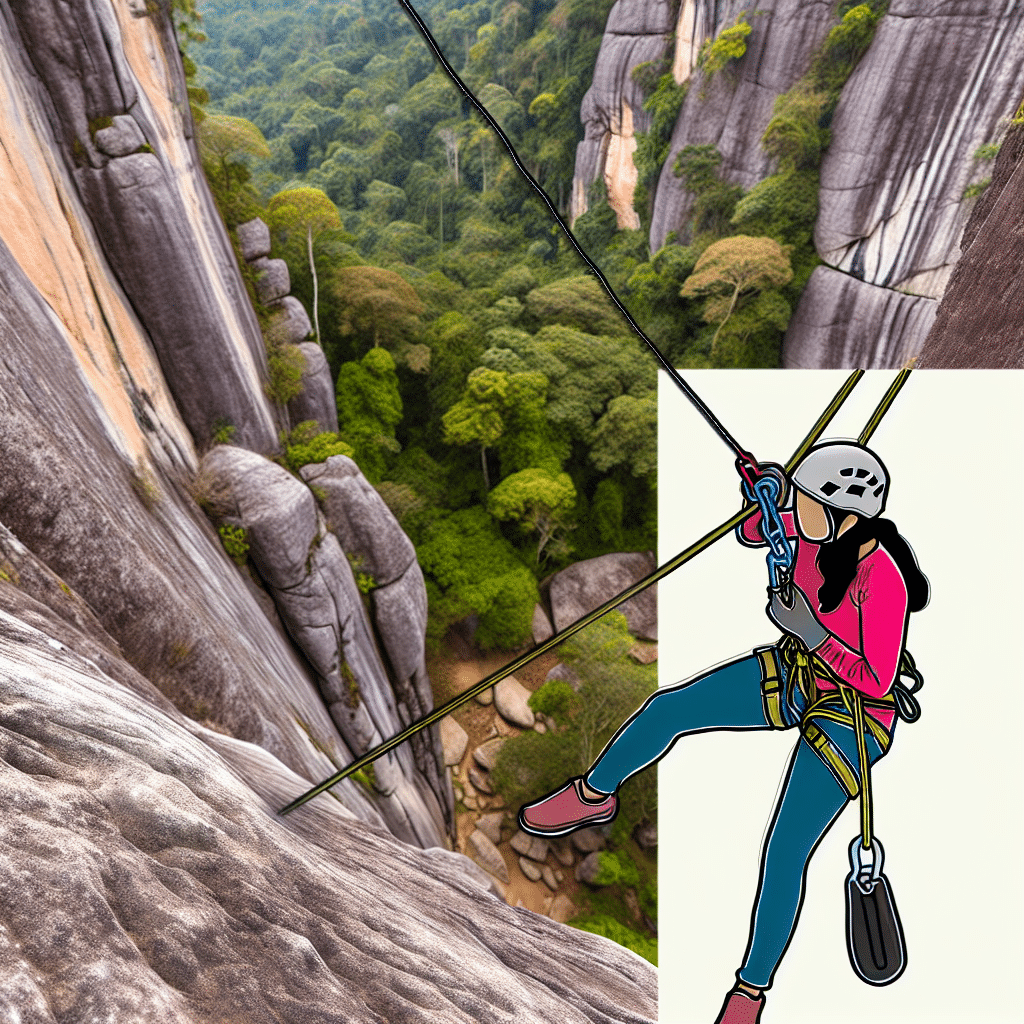Abseiling, also known as rappelling, is a technique used to descend vertical faces using ropes. It is an essential skill for rock climbers, mountaineers, and adventure enthusiasts looking to safely navigate down steep terrains. While it might seem daunting at first, mastering the basics of abseiling can open doors to exhilarating adventures and provide an incredible sense of achievement.

What is Abseiling? An Introduction to the Adventure
Abseiling is derived from the German word “abseilen,” which means “to rope down.” It involves descending a vertical or near-vertical surface by sliding down a fixed rope using specialized equipment. The technique is widely used in various outdoor activities such as rock climbing, canyoneering, spelunking, and even in rescue operations.
Essential Equipment for Abseiling
Before you embark on your abseiling adventure, it’s crucial to familiarize yourself with the equipment. Here’s what you will need:
1. **Harness**: A comfortable and well-fitted climbing harness is vital. It wraps around your waist and thighs, distributing your weight evenly.
2. **Rope**: A dynamic climbing rope is typically used for abseiling. Ensure it is of adequate length and strength, rated for the activity at hand.
3. **Belay Device**: Also known as a descender, this device controls the speed of your descent. Common types include the ATC (Air Traffic Controller) and the Figure 8.
4. **Carabiners**: These are metal loops with spring-loaded gates used to connect components. Locking carabiners are recommended for added security.
5. **Helmet**: Protects your head from falling debris and potential head injuries during the descent.
6. **Gloves**: These provide grip and protect your hands from rope burns.
7. **Anchors**: These are secure points where the rope is fixed. Natural anchors (like trees or rocks) or artificial ones (like bolts and cams) can be used.
Abseiling Basics: Getting Started
Understanding the fundamentals of abseiling is essential for a safe and enjoyable experience. Here are some key basics:
Setting Up the Anchor
The anchor is the most critical component of your setup. Ensure it is rock solid and can support multiple times your body weight. Common natural anchors include sturdy trees and large boulders. When using artificial anchors, ensure they are properly placed and tested.
1. **Double Check**: Always double-check your anchors, even if they are pre-existing. Look for signs of wear and tear.
2. **Redundancy**: Use multiple anchors whenever possible to increase safety. This is known as redundancy, where if one anchor fails, the other will hold.
Preparing the Descent
Once your anchor is set, it’s time to prepare for the descent:
1. **Rigging the Rope**: Thread the rope through the anchor point. If using a single rope, ensure both ends reach the ground or a safe stopping point.
2. **Attaching the Belay Device**: Attach the belay device to your harness using a locking carabiner. Pass the rope through the device according to its instructions, ensuring it is securely fastened.
3. **Safety Check**: Before you start descending, perform a final safety check. Are your harness and helmet properly secured? Is the rope correctly fed through the belay device?
Executing the Descent
Now comes the exhilarating part – the descent:
1. **Positioning**: Lean back and extend your legs, keeping them shoulder-width apart. Your feet should be flat against the rock surface.
2. **Control the Speed**: Use your dominant hand to control the descent speed. Hold the rope below the belay device and gently release it to move downward. Your non-dominant hand will keep you steady against the rock.
3. **Keep it Smooth**: Aim for a smooth, controlled descent. Avoid sudden jumps or jerky movements, which can cause loss of control.
4. **Foot Placement**: Place your feet firmly on the rock surface, adjusting as needed to maintain balance. Look for natural footholds for added stability.
What Are the Common Mistakes in Abseiling and How to Avoid Them?
Even with thorough preparation, mistakes can occur. Here’s how to avoid common pitfalls:
Poor Anchor Setup
A poorly set anchor is a disaster waiting to happen. Always double-check your anchor points for stability. Use multiple anchors when possible and test their strength before descending.
Improper Use of Equipment
Familiarize yourself with your gear before heading out. Practice using your harness, belay device, and carabiners in a controlled environment. Ensure you know how to rig the rope and operate the belay device correctly.
Rushing the Descent
Abseiling requires patience and control. Take your time, and don’t rush. Ensure your footing is secure and maintain a steady pace.
Why Learning Abseiling Basics is Crucial?
Mastering abseiling basics is not just about safety – it’s about confidence. Understanding how to set up your equipment, control your descent, and avoid common mistakes will make your experience far more enjoyable. Plus, these skills are transferable to other outdoor activities, broadening your adventure horizons.
So, get out there with your harness and helmet, find a rock face, and start practicing. With time and experience, you’ll find that abseiling can be a rewarding and thrilling addition to your outdoor adventures. Happy descending!



